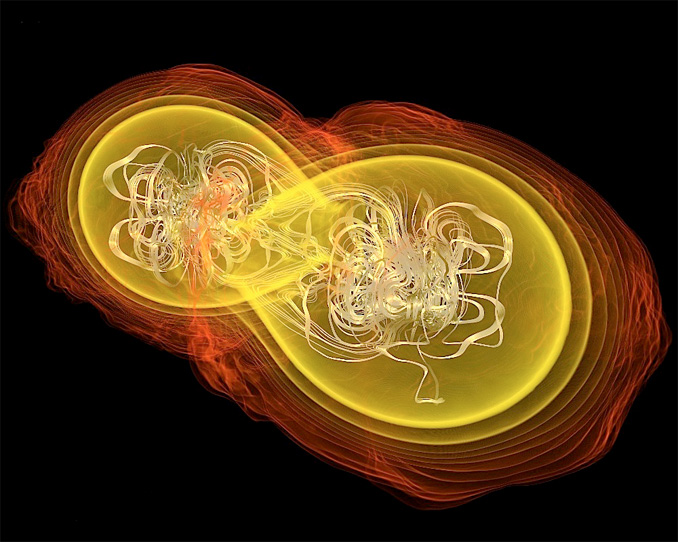
When massive stars run out of nuclear fuel, fusion reactions in their cores grind to a halt, no longer providing the outward pressure needed to offset the inward pull of gravity. In the resulting supernova, the outer layers of such stars are blown off while the cores collapse in a crushing gravitational grip.
Depending on the mass of the core, quantum mechanical effects can holt the collapse, forming a compact neutron star with the density of atomic nuclei. But if enough mass is present, nothing can stop the collapse and a black hole is born.
The question is, where is the dividing line, that is, what is the maximum mass a star’s core can have in which the collapse can be halted? Theory holds that for a non-rotating neutron star, that maximum mass is somewhere between two and three times the mass of the sun. But the precise value depends on the atomic state of matter in the stellar remnant.
As it turns out, gravitational waves may provide an answer. In a recent study led by Antonios Nathanail of the Institute for Theoretical Physics in Germany, researchers analysed the gravitational signatures of two cosmic mergers.
In one, known as GW170817, two neutron stars weighing between 1.1 and 1.6 solar masses merged to form a single object that presumably collapsed into a black hole. Gravitational and electromagnetic observations indicated a maximum neutron star mass of less than 2.3 solar masses. In the second merger, known as GW190814, a black hole with more than 20 solar masses combined with an object with 2.5 to 2.7 solar masses.
The researchers used an algorithm to analyse the mergers and concluded the maximum mass for a neutron star is about 2.2 solar masses, which matches observations of GW170817 as well as numerical simulations. In the latter case, the analysis showed the smaller body was too large to be a non-rotating neutron star and was, most likely, a black hole.



